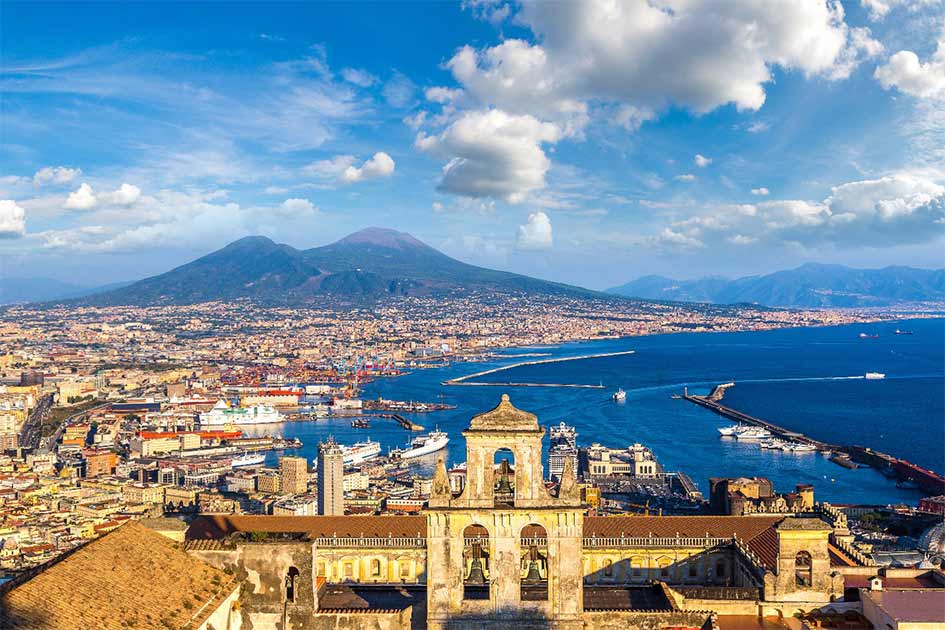
Herculaneum Beach in the ancient Roman city of Herculaneum, buried along with Pompeii by the eruption of Mount Vesuvius on October 24, 79 AD, will be excavated and restored. When the archaeologists are done, visitors can stroll along Herculaneum Beach, as the elite Romans once did, before nature’s deadly wave swept away the region.
Herculaneum Beach: Created and destroyed by a volcano
Just like today, but perhaps even more so in the ancient world, people were attached to their ancestral territories. For thousands of years, humans had farmed on the hyper-fertile slopes of Mount Vesuvius, and no one in the Roman world predicted that their natural sustainer of life, Vesuvius, was also a destructive god who would take it back.
In his 2013 BBC2 documentary The Other Pompeii: Life and Death in Herculaneum Wallace-Hadrill told the story of the AD 79 disaster and said that we all make “the mistake” of seeing ancient Roman society as a two-part entity: rich people or poor people. However, the presenter said, “Herculaneum gives us back the middle people – and they are extraordinary.”

Stunning paintings found in Herculaneum attest to the reputation of the Roman luxury seaside retreat. ( milosk50 / Adobe Stock)
A poorly maintained site becomes a prime example of excellence
Herculaneum was an ancient coastal town that is now located in the municipality of Ercolano, Campania, Italy. According to Strabo’s Geography the city had ancient Greek origins and has always been associated with the hero Heracles (Hercules), who was worshiped not only as the spiritual founder of the city, but also as the overlord of Vesuvius.
Like the nearby city of Pompeii, Herculaneum was also destroyed and buried under thick black volcanic ash and pumice during the eruption of Mount Vesuvius in AD 79. And it was also well preserved under deep layers of ash.
According to The New York Times in 2013: “From one of the worst preserved UNESCO sites at risk of being on the endangered list, Herculaneum has become a textbook example of successful archaeological preservation.”
Now a new phase of planned archaeological excavations is about to start, with the aim of restoring the beach of Herculaneum in Antica-Spiaggia area.

Boat houses on the beach of Herculaneum, where 300 skeletons were found. These unfortunate victims were about to be evacuated but never got out. (Matthias Holländer / Public domain )
Herculaneum beach was first and foremost a luxury seaside retreat
While Pompeii and Herculaneum were both covered in pyroclastic material from the volcanic blast, the director of the Herculaneum Archaeological Park, Francesco Sirano, said more wooden and organic artifacts and objects had been preserved in the latter.
This fact was illustrated in an article in The Telegraph That said, the charred remains of nearly “300 people were uncovered in a series of boathouses in which the last inhabitants perished in the intense heat waiting to be rescued from the sea.”
The Herculaneum Society say the city was smaller, but much richer than Pompeii. And although Pompeii was a thriving city and highly industrialized, Herculaneum served the mighty Roman elite “as a luxurious seaside retreat,” made up of grand and luxurious marble-clad houses.
Sirano told the Italian news agency ANSA that the Herculaneum Conservation Project ( HCP) began in 2001. But now that the team of archaeologists is once again aware of the complexity of the site, it expects “further and solid insights”.

Skeletons of victims in Herculaneum who died as a result of the eruption of Mount Vesuvius in AD 79. ( waldorf27 / Adobe Stock)
Challenges of the Herculaneum Beachside Restoration Project
The ANSA report says the planned excavations are expected to take two and a half years. The archaeologists are striving to reach the level of the western end of the beach, which they will return to the original sand level, just as it was at the time of the eruption in AD 79.
Ultimately, future visitors to the site will be able to relive those final moments in October 79 AD, when the gods re-established Roman society and rebuked them for their wealth and decadence.
However, because the intended beach is buried about four meters below the current sea level, this project will be different from previous excavations at Herculaneum. The excavators expect to face a host of unforeseen water drainage problems. But their anticipated hurdles aren’t just limited to the dangers of arduous archeology and the displacement of hundreds of tons of sand. The entire restoration project must also comply with modern water regulations.
Top image: Looking south from Naples along the coast to Herculaneum beach which is now being restored. Source: Sergii Figurnyi / Adobe Stock
By Ashley Cowie